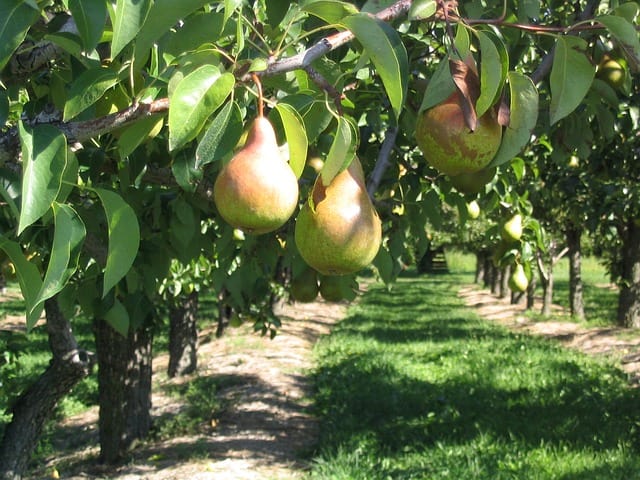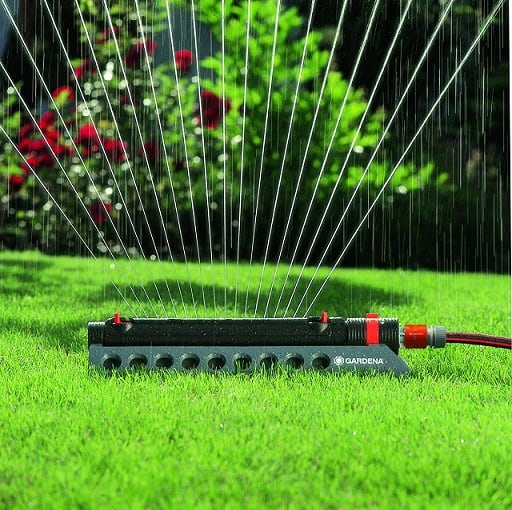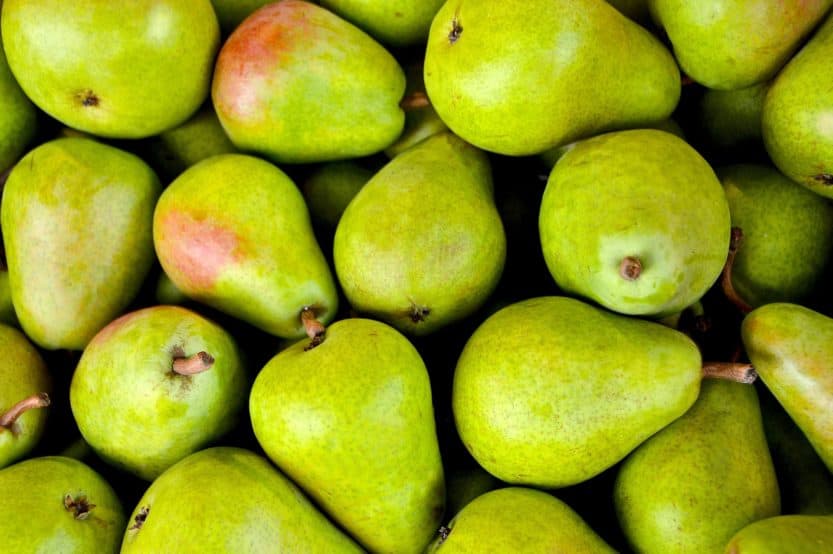Pears are a hard, sweet fruit with a touch of grittiness. Pears are a good source of vitamin C, copper and vitamin K. Planting any fruit tree is a long-term investment, so care should be taken to select a suitable variety, and you should also be sure the site that you pick can support the tree over its lifetime. Pear trees are very hardy though, and they even do well in cold climates, down to zone 4.
Buy Pear Trees Online
| Image | Name | Rating | Shop |
|---|---|---|---|
 | Bosc Pear Tree | ||
 | Martha’s Secrets Asian Pear Cocktail Tree Self Pollinating | ||
 | Moonglow Dwarf Pear Tree, Healthy 3′- 4′ tall Bare Root | ||
 | Bartlett Pear Tree, Healthy 3′- 4′ Fruit Trees |
Types of Pears Trees
The main pear varieties are Bartlett, Anjou, and Bosc. While they all have similar flavors, the Bosc type is the most common and tends to produce a harder fruit that keeps longer. Another important consideration, when choosing a variety of pear to grow, is disease resistance. Pear trees are highly susceptible to the fire blight fungus. If you live in a climate that tends to promote these diseases, then select a pear variety that has resistance to the fire blight, if possible.
Do Pear Trees Need Cross Pollination?
Pear trees, for the most part, need to be cross-pollinated, so be sure to plant at least two trees in close proximity. Dwarf pear trees can be found with all the disease-resistant traits you may need in your location.
Dwarf Pear Trees
Dwarf pear trees are a good choice, even if your growing area is not limited, because you can have more pear varieties in the same space that one standard pear tree would occupy. Dwarf pear trees also produce their first harvest earlier than standard pear trees and pruning and caring for a shorter tree is much easier.
When Do You Plant Pear Trees?
The best time to purchase a pear tree is in the early spring, once the ground has thawed and is easily worked. In some cold climates, you can plant pear trees in the summer; however, most varieties do well when they are planted in the spring.
Can You Grow Pears from Seed?
Most pear trees are planted as young, one-year-old trees, purchased from a nursery. While it is possible to start a pear tree from a seed, it’s best to buy a known variety from a nursery. Trees planted from seed might not be able to survive your local conditions or may not have the flavor or disease resistance a tree from a nursery will.
Once you have selected the variety you want and you have it in your possession, it is best to get the tree in the ground as soon as possible. If the roots appear dry or the plants were mail ordered, it might be best to soak the roots for twenty-four hours before planting.
Planting Pear Trees

Do Pear Trees Need Full Sun?
Pear trees need full sun, so make sure to plant them in a location that gets sun for most of the day and will not be obstructed over the lifetime of the tree. The soil in which you plant your pear tree should be rich, dense and fertile.
Pear Tree Soil

Since this tree will be in its location for years to come, it’s a good idea to test the soil where you plan to plant the tree. If any nutrient deficiencies or pH problems are detected, rectify them before planting the tree. Once the soil (Buy Online) in the surrounding area has been amended, dig a hole about 18 inches deep and mix in a liberal amount of compost, so the young roots will have a good healthy start.
How Far Apart to Plant Pear Trees
If you are planting dwarf trees, aim for a spacing of 10 feet (32.4 m); and if you are planting standard trees, then place them 20 feet (6.2 m) apart. Make sure to avoid planting your pear trees in low points or frost pockets on your property, as this might lead to bud loss on the tree in the early spring, which can ruin any chance of getting pears if that happens. If this cannot be avoided, choose a variety that comes out of dormancy and blooms later in the spring.
How Deep Do You Plant a Pear Tree?
Once you are ready to put your tree into the ground, dig a hole just deep enough so that the roots can be evenly spread out and the crown is 2 inches (5 cm) above the soil line. Make sure the soil underneath the roots is loose, so the roots are able to quickly establish themselves.
Carefully backfill the soil around the tree, while gently tamping the soil down, as you add it back in. Make sure that the tree is staying upright when you are covering the roots with dirt. Check that the graft union is not covered with dirt, as this can lead to disease and the death of the tree. No fertilizer should be added at this time, in order to limit the risk of burning the roots.
Pear Tree Care

Water the tree very well after it has been planted, as this will allow the soil to settle by pushing out any air pockets. While the tree is getting established, deeply water it every week. After the tree is fully established, natural rainfall should provide enough water.
Pear Tree Water Requirements

In some areas, where rainfall might not be enough, watering 1 to 2 inches (2.5 to 5 cm) every other week should suffice. As the tree ages, water less towards the trunk and more towards the perimeter of the tree, near the leaf drip line, as this is where the roots are most actively taking up water.
Mulch can be added around the tree while being careful not to allow the mulch to touch the trunk of the tree, as this can encourage rot along the base of the tree. Pear trees should be fertilized once a year. Fertilize the tree in the early spring with a low nitrogen fertilizer.
Pear Tree Pests and Diseases
Growing pear trees comes with a few insect and disease problems that you will have to deal with. One major problem is fire blight fungus, which attacks the tree by turning the infected branches black as if they were burned by fire.
Pear Tree Fire Blight Treatment
If you find any limbs infected with fire blight, cut them from the tree and burn them so that the fungus does not spread. If fire blight is a big problem in your area, you can spray the tree with a fungicide, such as Bordeaux, to prevent the infection.
Protecting Pear Trees from Codling Moth’s

As for insects, the larvae of the codling moth can bore holes in the pears that can lead to rot and overall loss of yield. In order to counter codling moth, spray the plant with an insecticide (Buy Online) right after the flowers drop from the tree.
Thinning Pear Trees
When the tree begins to produce its first harvest, you should thin the fruit down to just a few well-spaced pears, so the branches do not get overcrowded and too heavy. Harvest times vary for different varieties, but most pears are ready to harvest in the fall.
When are Pears Ready to Pick?
Wait until the pears are easy to remove from the tree; and, if they resist pulling them from the branch, then wait another few days, in order to limit any potential damage to the tree. Pears tend to ripen from the outside of the tree inwards.
Pears will change color from green to a golden yellow. Remove any decaying pears from the base of your trees, in order to reduce insects and other diseases that might damage your tree in the future.
Storing Pears Over Winter
Fresh pears can be stored in the refrigerator for months. Some pears actually need to be kept in cold storage to ripen, such as Anjou, while Bosc and Bartlett will ripen at room temperature. Pears, in general, should be eaten before they become soft and mushy. For long-term storage, you can freeze the sliced pears or can them in syrup.





